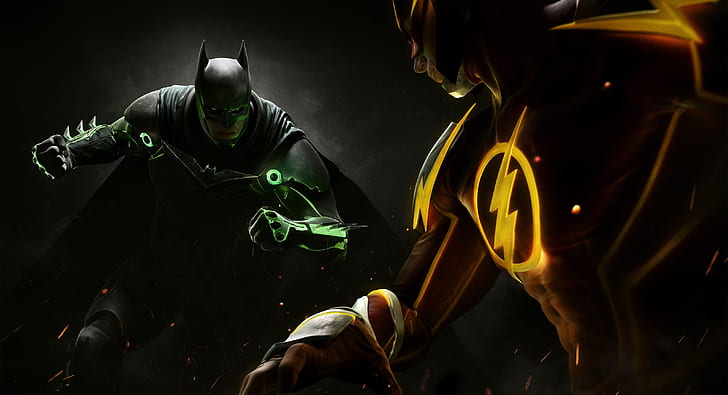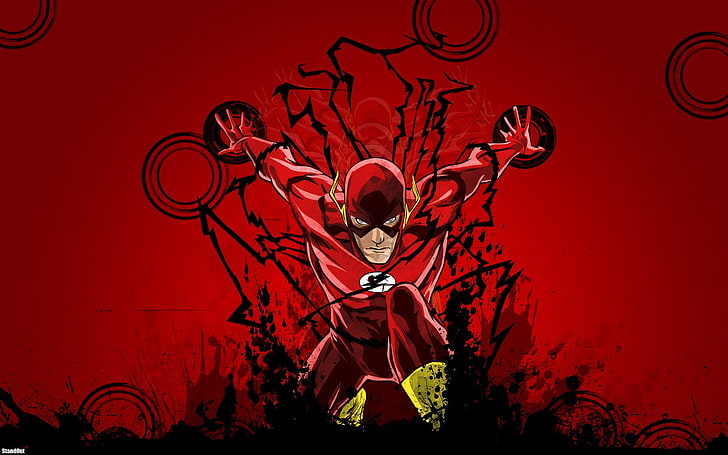Flash games have revolutionized the way we engage with interactive entertainment, offering countless hours of fun and creativity. From their humble beginnings in the late 1990s, these browser-based games quickly gained popularity, thanks to their accessibility and variety. Players could dive into immersive worlds filled with puzzles, action, and simulation, all without needing special software or consoles. Over the years, flash games not only influenced the gaming industry but also shaped cultural trends, making them a pivotal part of online leisure activities.
As we explore the rich history of flash games, we’ll delve into their evolution, the popular genres that emerged, and what the future holds in a world transitioning to new technologies. Understanding these aspects provides insight into why flash games hold a beloved place in the hearts of gamers around the globe.
History of Flash Games

The evolution of flash games began in the late 1990s, marking a transformative period in online gaming. Initially, these games were simple and rudimentary, crafted primarily using Adobe Flash technology. Over the years, flash games captured the hearts of millions, paving the way for wider accessibility and innovation within the gaming industry.
Flash games originated around 1996 when Macromedia, the parent company of Adobe Flash, introduced the technology that would enable developers to create interactive multimedia content. By the early 2000s, flash games exploded in popularity due to the rise of websites dedicated to hosting them. This era saw significant milestones such as the launch of sites like Newgrounds and Miniclip, which became hubs for game developers and players. The technology allowed for rich graphics, animations, and increasingly complex gameplay, leading to the creation of iconic titles like “Line Rider” and “Homestar Runner.” As broadband internet became more widespread, more players could access these games, which contributed significantly to the growth of the casual gaming market.
Significant Milestones in Flash Gaming Technology
The history of flash games is marked by several advancements that enhanced their appeal and functionality. Key developments include:
- Early Development: In 1996, the introduction of Macromedia Flash Player set the stage for a new form of interactive entertainment. It allowed developers to create animated content that could run directly in web browsers.
- Broadband Adoption: The early 2000s saw increased broadband internet access, enabling smoother gameplay and richer graphics, which elevated user experience.
- Game Portals: The emergence of dedicated gaming portals, such as Kongregate in 2006, fostered a community where developers could share their work and players could easily discover new games.
- Social Integration: The integration of social features in the late 2000s, like sharing scores and achievements on social media, further engaged players and encouraged competition.
- Shift to Mobile: With the rise of smartphones in the 2010s, many flash games transitioned to mobile platforms, adapting for touch interfaces and changing how players interacted with games.
Impact of Flash Games on the Gaming Industry and Culture
Flash games have significantly influenced the gaming landscape and popular culture. Their impact is evident in various aspects:
- Accessibility: Flash games democratized gaming, allowing anyone with internet access to enjoy games without the need for expensive consoles or PCs. This has encouraged a diverse audience to participate in gaming.
- Indie Development: The simplicity of flash game development empowered independent developers to create and share their games, fostering a vibrant indie gaming scene that thrives to this day.
- Cultural References: Notable flash games have made their mark on pop culture, influencing memes, artwork, and even inspiring full-length games and adaptations in other media.
- Innovation in Game Design: Flash games often experimented with gameplay mechanics and narrative styles, leading to innovative ideas that have been adopted in larger-scale game development.
- Community Engagement: The flash gaming community has created a unique culture around game sharing, feedback, and collaborative development, illustrating the importance of player involvement in the gaming ecosystem.
Popular Genres of Flash Games

Flash games have captivated a wide audience since their inception, offering a diverse array of genres that cater to various gaming preferences. Each genre comes with its unique characteristics, drawing players for different reasons. The blend of creativity, accessibility, and engaging gameplay has ensured that flash games remain a staple in online entertainment.
The most played genres within flash games include puzzle, action, and simulation. Each genre not only provides fun and enjoyment but also attracts distinct player demographics based on interests and gaming styles. Below is an exploration of these popular genres, accompanied by notable examples that highlight their uniqueness.
Puzzle Games
Puzzle games are among the most cherished genres in flash gaming, known for their ability to challenge players’ critical thinking and problem-solving skills. These games often feature intricate design and mechanics that require strategic planning and foresight.
Some popular puzzle games include:
- Bloons Tower Defense: This game combines strategy with tower defense mechanics, requiring players to pop balloons using various towers and upgrades.
- Crush the Castle: In this physics-based puzzle game, players use a trebuchet to destroy castles and the inhabitants within, utilizing effective angles and timing.
- GemCraft: A tower defense game infused with puzzle elements, where players must strategically place gems to fend off waves of enemies.
Puzzle games tend to attract players who enjoy mental challenges, often appealing to a broader age range, including both younger audiences and adults seeking stimulating gameplay.
Action Games, Flash games
Action games in flash format offer fast-paced gameplay that is often adrenaline-fueled and dynamic. These games typically emphasize hand-eye coordination, quick reflexes, and often include combat or obstacle navigation.
Noteworthy titles in this genre comprise:
- Super Smash Flash: A fan-made crossover of popular characters, providing a fighting experience reminiscent of console classics.
- Madness: Project Nexus: An action-packed shooter that features unique animation styles and intense gameplay, focusing on combat and survival.
- Fancy Pants Adventure: A platformer that combines action with exploration, known for its fluid animation and creative level designs.
Action games primarily attract younger players and those looking for high-energy experiences, often fostering a sense of competition and community among gamers.
Simulation Games
Simulation games provide players with the opportunity to immerse themselves in virtual experiences that mimic real-life activities or scenarios. They often emphasize realism and involve managing resources or characters.
Prominent simulation games include:
- FarmVille: A social simulation game that allows players to create and manage their own farms, focusing on crop management and social interactions.
- SimCity: This classic city-building game enables players to design and manage a city, balancing infrastructure, economy, and citizen needs.
- Rollercoaster Tycoon: A theme park simulation game where players design and manage roller coasters and attractions, providing strategic management gameplay.
Simulation games appeal to various demographics, including those interested in strategy and management, often attracting players who enjoy long-term planning and creativity in gameplay.
Flash games continue to evolve, yet the core appeal of each genre lies in its ability to engage and entertain diverse player communities.
Future of Flash Games

The landscape of online gaming has undergone a significant transformation, particularly with the decline of Flash technology. As we look toward the future of flash games, it’s essential to examine how this transition has influenced game development and accessibility, along with the emerging platforms that are taking their place.
The shift from Flash to HTML5 has had profound implications for the gaming industry. HTML5 offers greater compatibility across devices, enhanced performance, and improved graphics capabilities. This transition not only promotes a better gaming experience but also allows developers to create richer content without the limitations that Flash presented. As a result, many classic flash games are being re-engineered for HTML5, ensuring they remain accessible to both new players and nostalgic fans alike.
Emerging Technologies and Platforms
Several new technologies and platforms are gaining traction as potential successors to traditional Flash games. These advancements are reshaping the gaming ecosystem:
- HTML5: This robust technology has become the standard for web-based gaming, providing cross-platform functionality and support for complex graphics and audio.
- WebAssembly: An emerging technology that allows developers to run code written in languages like C++ on the web, offering near-native performance for gaming applications.
- Cloud Gaming: Platforms like Google Stadia and NVIDIA GeForce NOW enable users to play high-quality games directly from their devices without needing powerful hardware, making games more accessible.
- Mobile Gaming: The rise of mobile devices has led to a surge in mobile-friendly games, allowing developers to reach wider audiences and create games designed for touch interfaces.
- Virtual Reality (VR) and Augmented Reality (AR): These technologies present new opportunities for immersive gaming experiences, potentially expanding the horizons of what flash games could evolve into.
As the gaming industry embraces these innovations, there is a rich potential for nostalgia-driven revival or modern adaptations of classic flash games. Many developers are recognizing the emotional connection players have with these games, leading to exciting new projects that pay homage to the originals.
“Reviving classic flash games with modern graphics and gameplay mechanics can create a bridge between past and present, enhancing the gaming experience for a new generation.”
Modern adaptations can take various forms, such as remastered versions with updated graphics, enhanced storylines, and new gameplay features. Some developers are even incorporating multiplayer elements into previously single-player flash games, fostering community engagement. This combination of nostalgia and innovation showcases the enduring appeal of these games, ensuring they remain relevant in today’s gaming landscape.

![15 Best Online Games For PC -2021 [ Multiplayer, Must Play Now]](https://arcadhaven.biz.id/wp-content/uploads/2025/07/World-Of-Tanks-150x150.jpg)